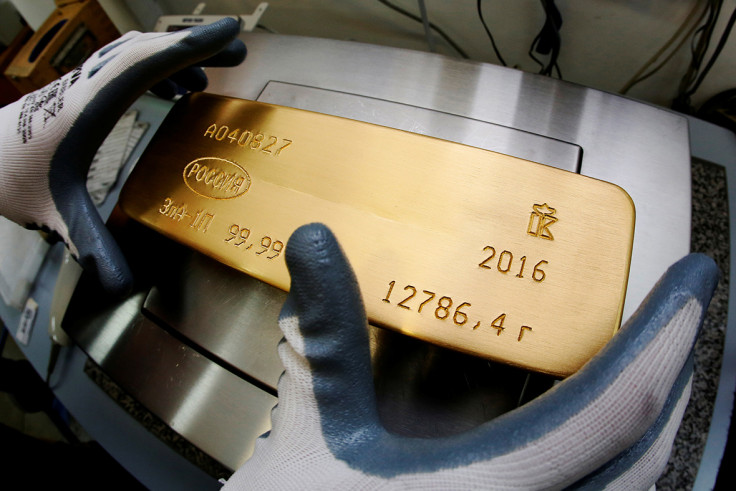Commodities Round-up: Trump's inauguration speech sees gold spike to two-month high
US President's 'America First' line at his inauguration extended gains in the precious metals market.

Precious metals extended gains on Monday (23 January) with gold leading the way, after US President Donald Trump unveiled a protectionist 'America First' stance at his inauguration, and subsequently threatened to rip up global trade agreements sending the dollar lower.
At 3:52 pm GMT, the Comex gold futures contract for February delivery was up 0.85% or $10.30 at a two-month high of $1,215.20 an ounce, while spot gold was up 0.52% or $6.33 at $1,216.65 an ounce.
Carlo Alberto De Casa, chief analyst at ActivTrades, said: "It has been a good start to the year for the yellow metal – just as it was in 2015 and 2016. From the bottom reached in the second half of December at $1,122 an ounce, gold prices have overtaken the resistance area of $1,200.
"If you add in the markets' fear around the future policy decisions of Trump, which has pushed down the dollar, there could be further space for the recovery of gold."
Elsewhere, Comex silver rose 0.84% or 14 cents at $17.18 an ounce, while spot platinum was up 0.04% or 39 cents to $978.59 an ounce. Meanwhile, the palladium rally stalled, after traders cashed in on the recent spike, with the precious metal shedding 1.95% or $15.39 to $773.17 an ounce. However, still up by over 15% in the year to date, atop a 20% rise in 2016.
Away from the precious metals market, oil futures headed into negative territory despite Opec and non-Opec producers - partaking in the ongoing round of crude production cuts - reaffirming the market about both their commitment and steady monitoring of the outlined reduction.
Meanwhile, in a related development, Equatorial Guinea - one of the non-Opec producers involved in the production cuts - said it has applied to join Opec. According to data aggregators, its production stands at 240,000 barrels per day, which it has vowed to reduce by 12,000 bpd under the Opec and non-Opec agreement.
At 4:15pm GMT, the Brent front month futures contract was down 0.45% or 25 cents to $55.24 per barrel, while the West Texas Intermediate (WTI) was 0.88% or 47 cents lower at $52.75 per barrel, with the International Energy Agency claiming that output cuts by Opec won't necessarily trigger a US shale production "bonanza".
Bjarne Schieldrop, chief commodities analyst at Nordic bank SEB, said a hypothesis has started to form in the market that Opec is placing a floor ('put') for Brent crude price at $50, while US shale producers are placing a cap on the upside at $60, which would strongly accelerate the country's oil production.
"As a new consensus is starting to form, the fog around the oil market balance should become clearer and the oil price is likely to start stabilising. Last week, the Brent prices ranged from around $53.5-56 and at the moment trades at $55.5, supporting this view.
"There are of course a lot of dreams out there about much higher prices ahead, but for now a market consensus seems to be forming around these two supply forces: Opec cuts at $50 versus US shale supply boost at $60."
© Copyright IBTimes 2025. All rights reserved.






















